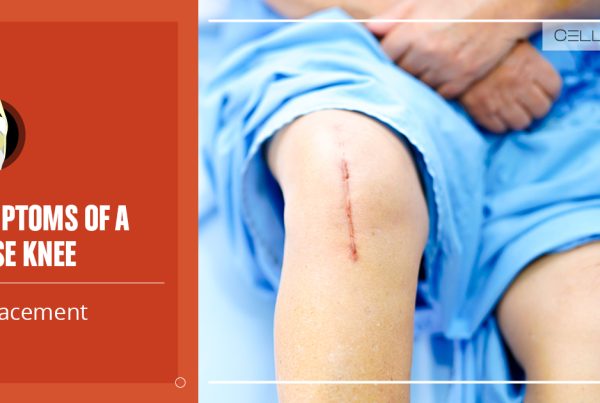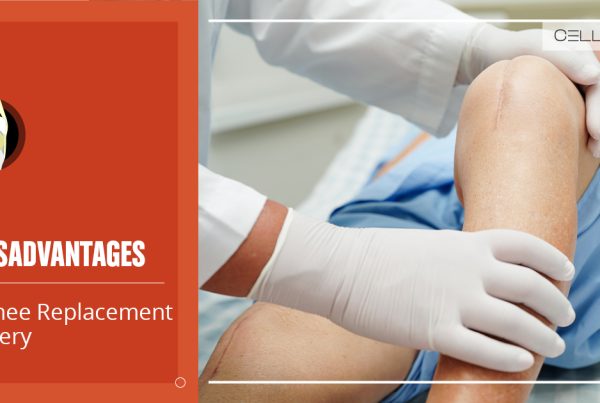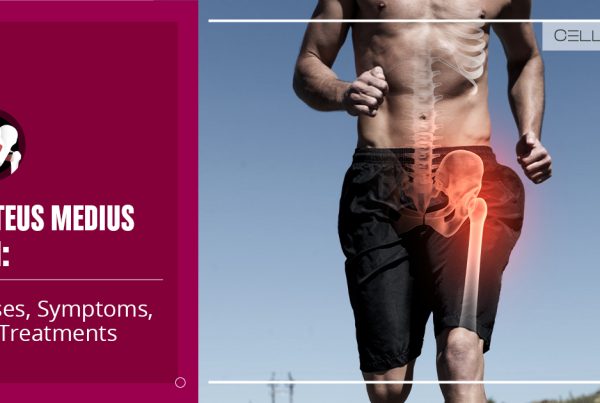Published on: November 22, 2022 | Updated on: January 18, 2025
An anterior cruciate ligament or ACL tear is the most common injury among athletes and people who regularly do physically demanding exercises. The ACL tissues prevent our knee from bending sideways during different movements.
When the ACL is torn, the affected person feels immense knee pain in bending, pivoting, and performing any extensive activity. Most patients with torn ACL prefer surgery, while others rely on physical therapy and alternatives. Many also opt for orthobiologic treatments, which are less painful and have a short recovery time.
The surgical treatment for ACL includes restoring the ligament with tendon grafts. If you don’t opt for surgery, your ACL tear will remain and pose long-term effects. However, the swelling and continuous pain may heal.
Is ACL Surgery Necessary After the Tear?
A clinical trial conducted by Richard B. Frobell, a PhD physiotherapist at Sweden’s Lund University, and his colleagues found that surgery may not always be the first-hand treatment for ACL tears. His team gathered 121 young, active people, mostly highly competitive athletes, and divided them into two groups based on the treatment.
Both groups participated in a well-structured rehabilitation program. They performed different activities to improve their knee balance and coordination.
The first group underwent ACL reconstruction surgery within ten weeks of the injury. Meanwhile, others delayed the surgery until they truly needed it or healed. Both groups were observed again after two years. Surprisingly, both treatments showed terrific results.
However, one notable difference was that 60% of the patients who delayed the ACL reconstruction surgery reported that they never needed it. Frobell concluded that rehabilitation could help decrease the number of people needing ACL surgery. This means the operation isn’t always necessary after the injury.
Potential Long-Term Effects of No Surgery on the ACL Tear

While surgery may not be your first choice, it can pose some potential side effects on your ACL. Without surgery, your knee may heal independently, and you won’t feel pain or swelling. But your ACL tear will remain as the ligament can’t reattach or recover. However, you can continue your life as before by strengthening your core (the back and hips) and leg muscles through physical exercises.
If your daily routine includes physically demanding activities, you should maintain your body’s strength to prevent injuries. That’s specifically important if you’re an athlete or play competitive sports.
Surgery might be the best option for young individuals to enjoy life like before. On the other hand, older or less active people can rely on non-surgical treatments to perform their minimal daily activities.
Some potential long-term effects of ACL tear without surgery include:
- Knee Instability. When living your usual life, you may suddenly feel your leg is not cooperating with your body. It will be more like you want it to move a certain way, and it just gives away.
- Osteoarthritis Impact. A study published by the Hospital for Special Surgery (HSS) found that reconstructing the ACL tear through surgery is essential to prevent patients from having osteoarthritis. Without the surgery, these patients will likely sustain damage to their cartilage near the ACL.
- Limited Activities. With an ACL tear, your activities are more likely to be fixed, restricting you from participating in sports and work-related activities involving aggressive pivoting, cutting, and sudden landing. If you try to perform these activities either way, your knee will feel unstable or swollen.
- Risk of More Injuries. The ACL stabilizes the thigh and the knee’s shinbone. When torn or broken, both bones may dislocate in undesirable ways, increasing the risk of more injuries to your knee.
- Ambiguity. Non-surgical options don’t ensure the patient or the doctor whether the affected knee can return to its full functionality. So, it always stays ambiguous for both the patient and the doctor.
Many patients with ACL tears may not instantly experience the above side effects. But their ligament will stay torn, requiring any form of intervention in the long term.
What Are Non-Surgical ACL Tear Treatment Options?
Whether you opt for the surgery immediately or delay it for rehabilitation, you must follow a specific procedure to prevent swelling and reduce pain. This will help you restore your balance, allowing you to perform your daily activities.
Conventional Treatments
Here are some conventional non-surgical ACL tear options:
- Follow the Rehabilitation Protocols. First, you must get your knee evaluated by a professional healthcare provider to diagnose your condition. You may have other injuries, too. After the diagnosis, the doctor may recommend resting and icing the affected area. The longer you delay the rehab, the worse your knee could get.
- Perform Prehabilitation Exercises. Prehabilitation exercises help you regain muscle strength and regular functioning of your knee. This way, you’ll be well-prepared for ACL reconstruction surgery if you go for it in the future. To achieve better results, ensure to choose a professional physical therapist.
- Evaluate Your Options. Always discuss the type of treatment you need with your healthcare provider. Whether you opt for surgery or rehab, it’s better to evaluate the pros and cons of each to determine the most suitable treatment.
- Go for Re-Consultation. If you suspect new knee swelling or sudden instability, immediately opt for re-consultation with your medical team.
Orthobiologic Treatments
The field of regenerative medicine offers a less invasive and painful alternative for ACL tear surgeries. It includes orthobiologic treatments, primarily cell-based and platelet-rich plasma (PRP) therapies. Both types of treatment use the patient’s own or “autologous tissues,” process them and reinject them into the injury site to promote healing.
- Cell-Based Therapies. Also known as stem-cell therapies, these procedures extract healthy cells or tissues from the patient’s adipose (fat) tissue or bone marrow. When they are harvested from the adipose tissue, the process is called Minimally Manipulated Adipose Tissue Transplant (MMAT). On the other hand, when highly concentrated cells are extracted from the patient’s bone marrow, it is called Bone Marrow Concentrate (BMAC).
- Platelet-Rich Plasma (PRP) Therapy. PRP includes drawing a blood sample from the patient, processing it to isolate platelets, and reinjecting them into the injury site (knees). Platelets are the healing components of our body that release 10 Growth Factors, attract healing cells from the blood, and produce fibrin to encourage the development of new tissues.
Cell-based and PRP therapies are outpatient procedures, meaning you can go home right after the procedure. MMAT and BMAC take about 1.5 to 2 hours to complete, while PRP takes 45 minutes. Both regenerative therapies promote the healing and recovery of ACL tears.
Sources
Footnotes
- Chambat P. ACL tear. Orthopaedics & Traumatology: Surgery & Research. 2013;99(1):S43-52.
- Sanders TL, Pareek A, Kremers HM, Bryan AJ, Levy BA, Stuart MJ, Dahm DL, Krych AJ. Long-term follow-up of isolated ACL tears treated without ligament reconstruction. Knee surgery, sports traumatology, arthroscopy : official journal of the ESSKA. 2017;25(2):493-500.
- Frobell RB, Roos EM, Roos HP, Ranstam J, Lohmander LS. A randomized trial of treatment for acute anterior cruciate ligament tears. The New England Journal of Medicine. 2010;363(4):331-42.
- Musahl V, Diermeier T, de SA D, Karlsson J. ACL surgery: when to do it?. Knee Surgery, Sports Traumatology, Arthroscopy. 2020;28:2023-6.
References
- Long-Term Effects Of ACL Tear Without Surgery- Guidelines. Hip & Knee Orthopaedics. Accessed 9/7/2023.
- Ruptured ACLs can heal without surgery, study finds. The University of Melbourne. Accessed 9/7/2023.
- ACL Tears: MRI Reveals Long-Term Osteoarthritis Impact. HSS. Accessed 9/7/2023.
CELLAXYS does not offer Stem Cell Therapy as a cure for any medical condition. No statements or treatments presented by Cellaxys have been evaluated or approved by the Food and Drug Administration (FDA). This site contains no medical advice. All statements and opinions are provided for educational and informational purposes only.
Dr Pejman Bady
Author
Dr. Pejman Bady began his career over 20 years ago in Family/Emergency Medicine, working in fast-paced emergency departments in Nevada and Kansas. He has served the people of Las Vegas as a physician for over two decades. Throughout this time, he has been met with much acclaim and is now the head of Emergency Medical Services in Nye County, Nevada. More about the doctor on this page.
Dr Pouya Mohajer
Contributor
Pouya Mohajer, M.D. is the Director of Spine and Interventional Medicine for CELLAXYS: Age, Regenerative, and Interventional Medicine Centers. He has over 20 years of experience in pain management, perioperative medicine, and anesthesiology. Dr. Mohajer founded and is the Medical Director of Southern Nevada Pain Specialists and PRIMMED Clinics. He has dedicated his career to surgical innovation and scientific advancement. More about the doctor on this page.









